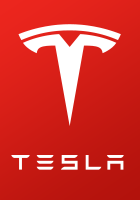Elon's tweet today said of the dual motor Model 3:
"AC induction front & switched reluctance, partial permanent magnet rear. Silicon Carbide inverters in both. Performance drive units are lot sorted for highest sigma output & get double the burn-in."
The silicon carbide part refers to the power electronics in the inverters, like transistors and IGBTs. If you use Silicon Carbide instead of Silicon as the base wafer, you get 10x voltage capability with the same thickness material, less heat loss, more efficiency, etc.
More info here: https://spectrum.ieee.org/semiconductors/materials/silicon-carbide-smaller-faster-tougher
"AC induction front & switched reluctance, partial permanent magnet rear. Silicon Carbide inverters in both. Performance drive units are lot sorted for highest sigma output & get double the burn-in."
The silicon carbide part refers to the power electronics in the inverters, like transistors and IGBTs. If you use Silicon Carbide instead of Silicon as the base wafer, you get 10x voltage capability with the same thickness material, less heat loss, more efficiency, etc.
More info here: https://spectrum.ieee.org/semiconductors/materials/silicon-carbide-smaller-faster-tougher


